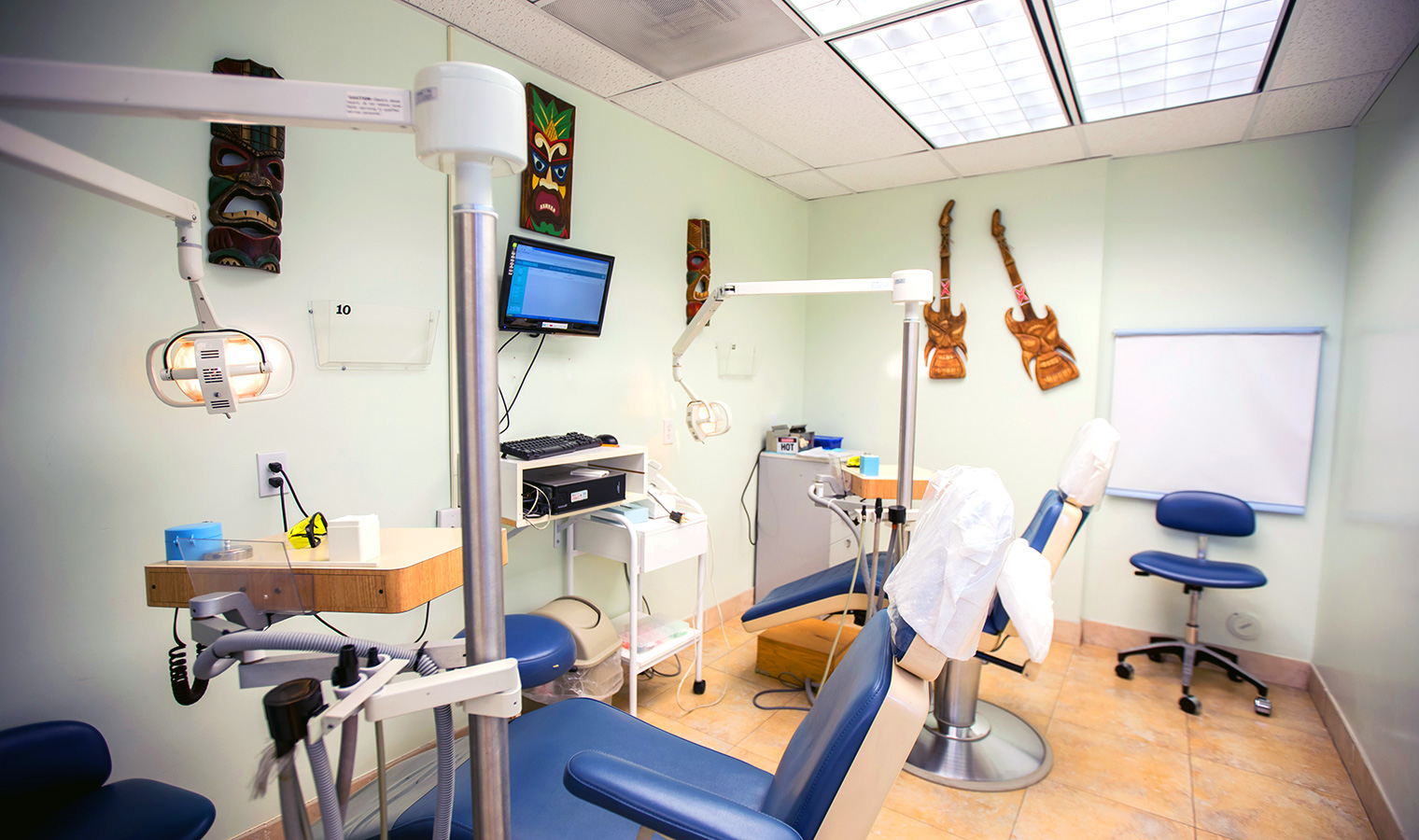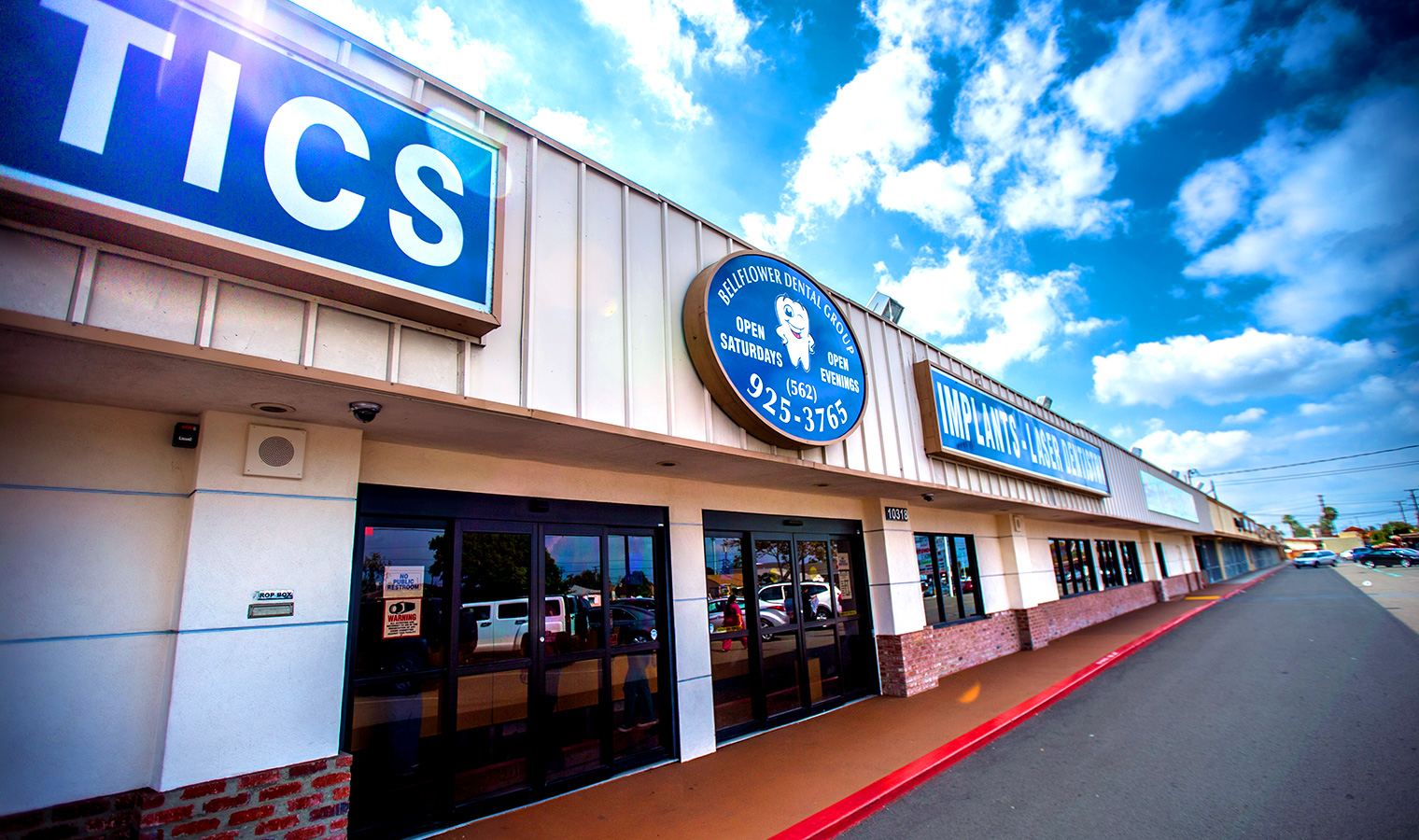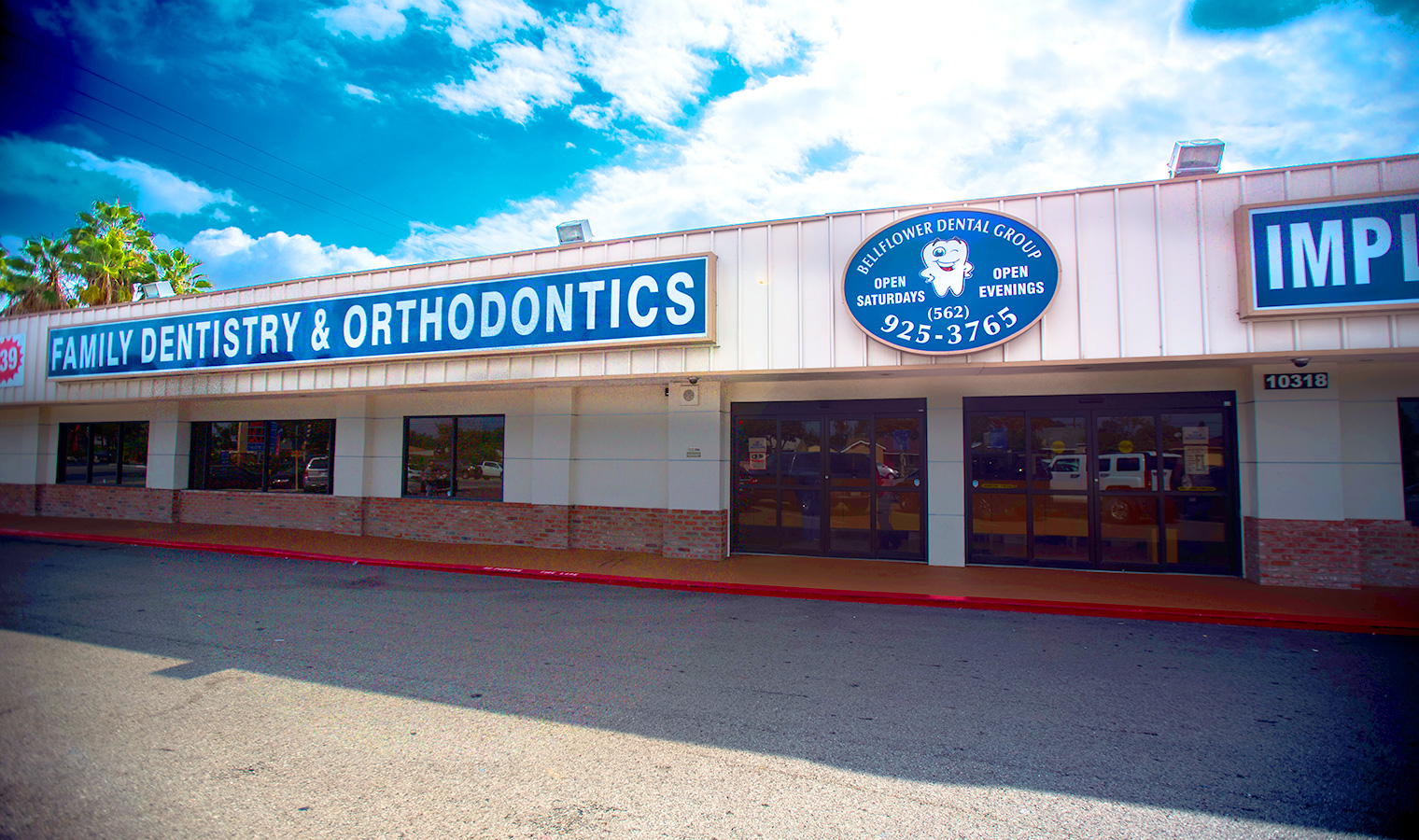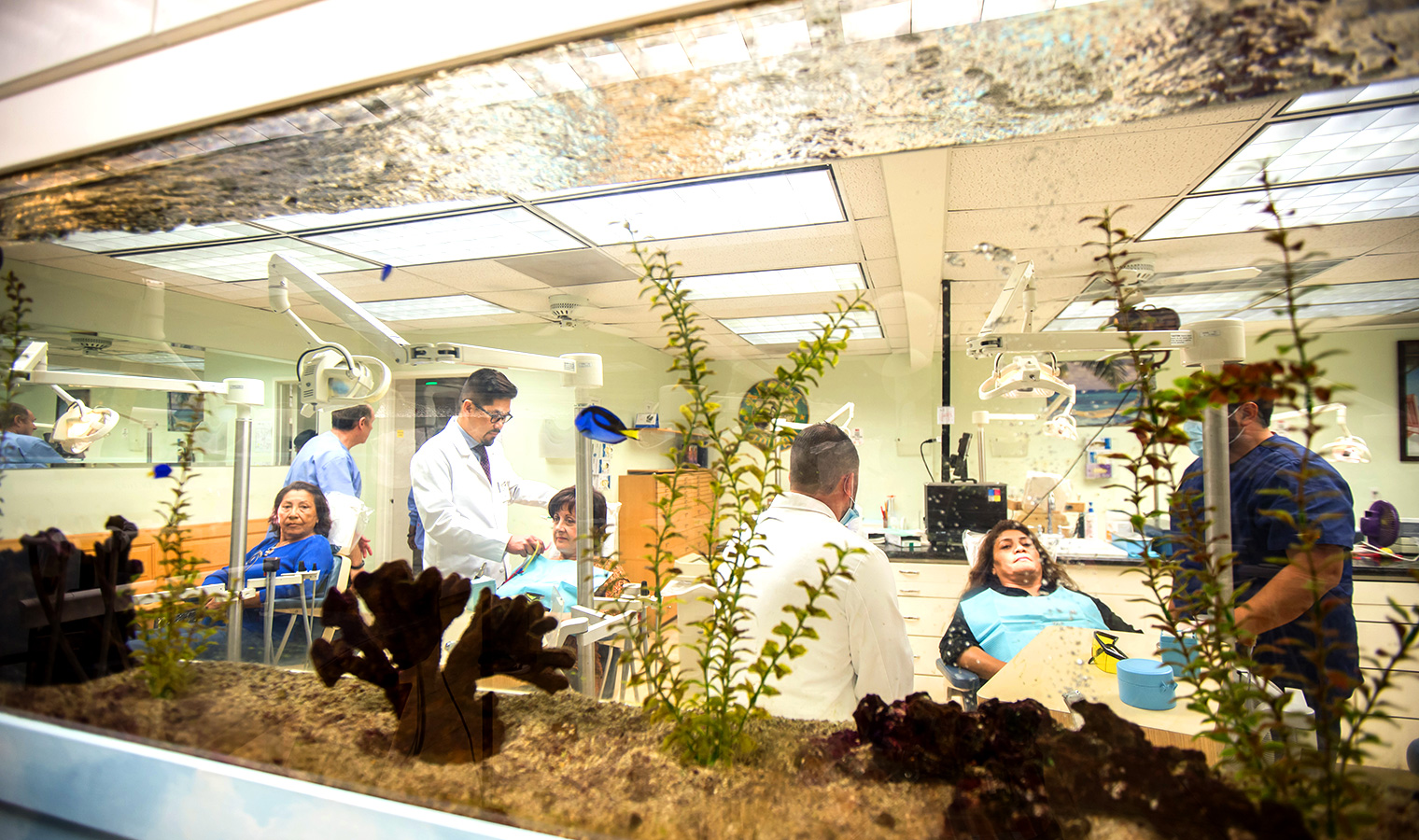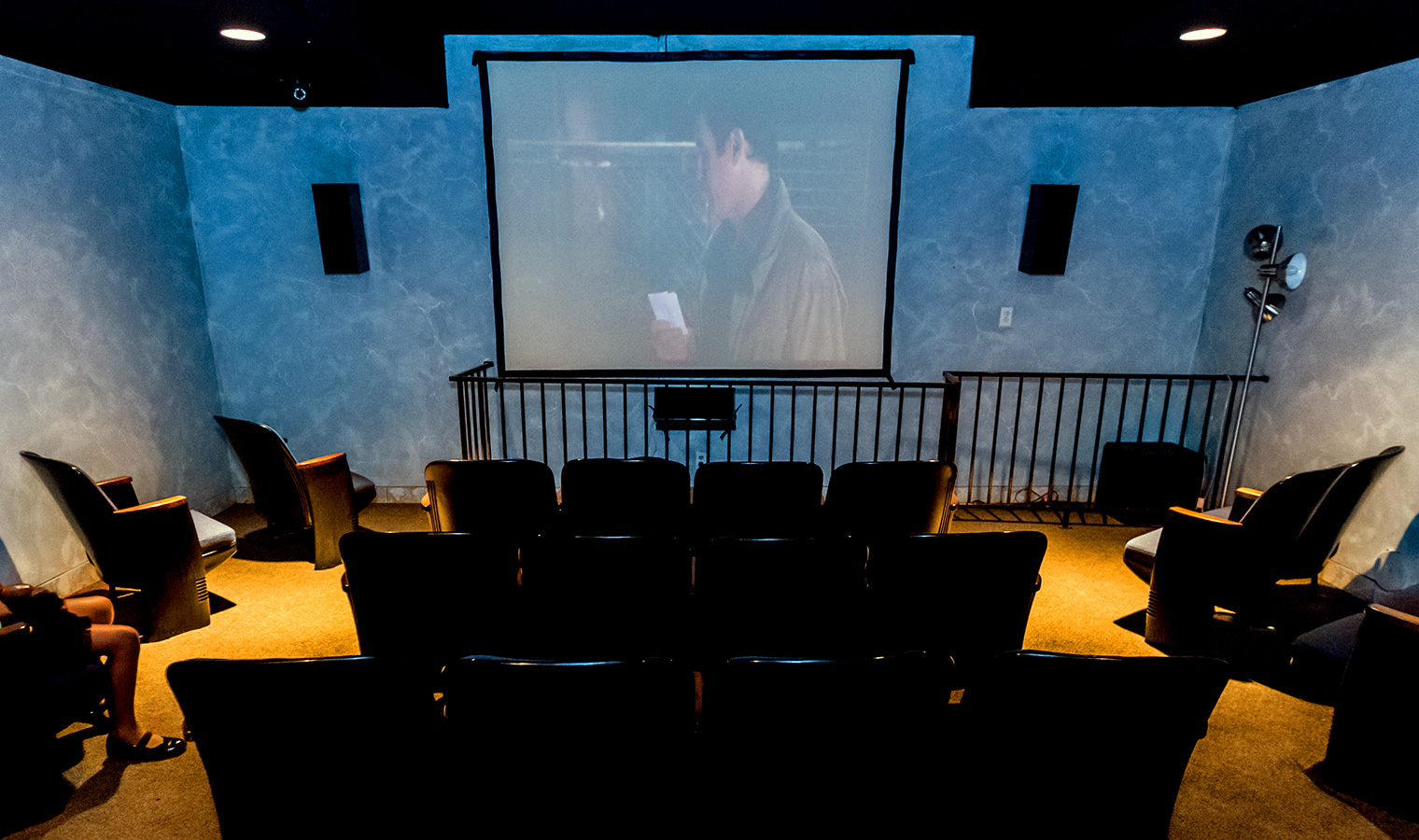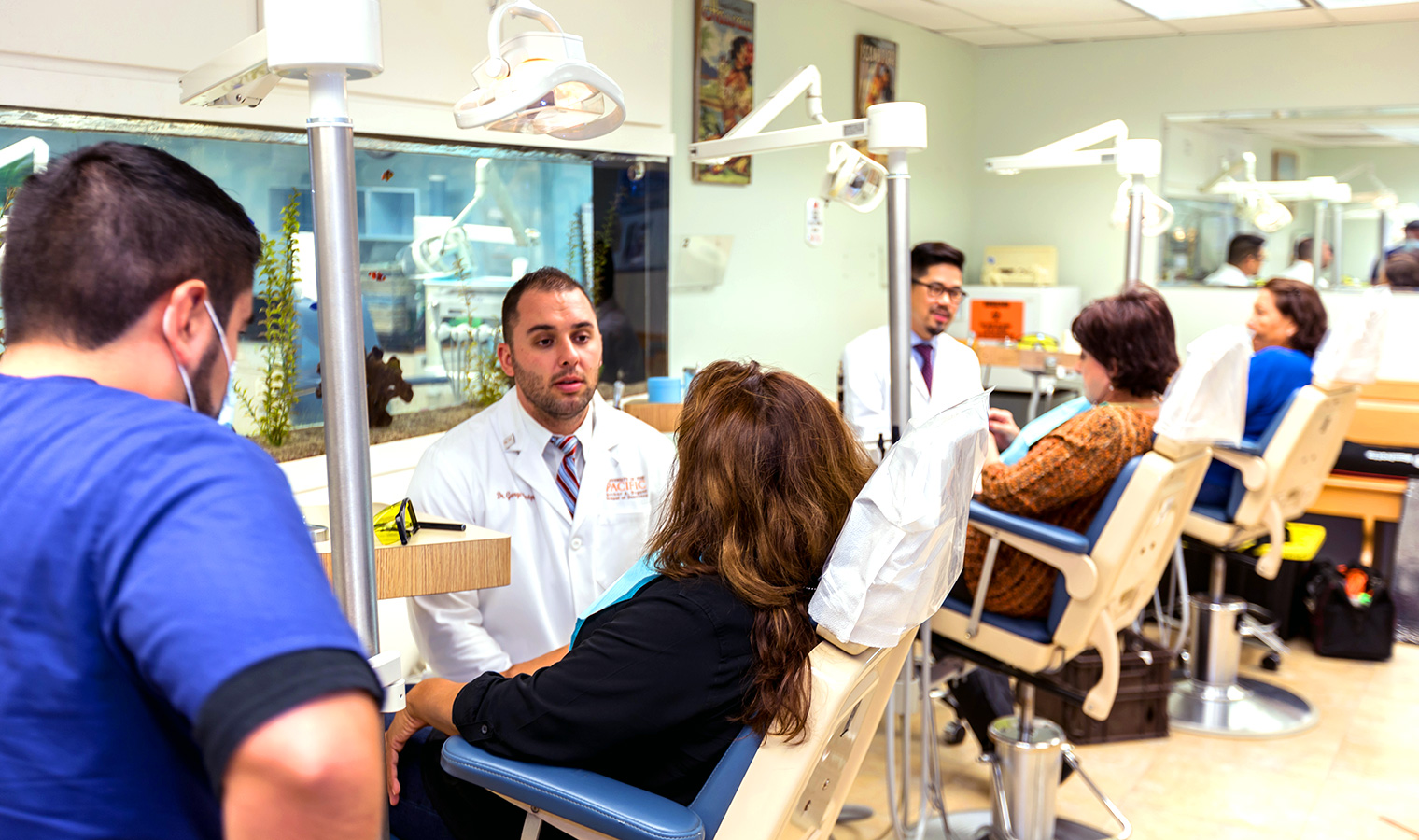You should never leave a missing tooth alone for too long, or the results can be disastrous.
After a tooth extraction, many of our patients think they can leave their new tooth gap alone and unfilled. Now that they’re out of pain and their mouths are finally free of dental decay and gum disease, they can go about their lives sporting a cool and unique look.
At Bellflower Dental Group, we always suggest our patients seek an appropriate replacement tooth as soon as they can. If it’s not an emergency extraction, we may even recommend a same-day procedure. “But why?” many of our patients ask us. “Is it the end of the world—and my smile—if I choose to leave my missing teeth gap alone?” While this may seem dramatic, this decision can ruin the rest of your smile in just a few years.
What Happens If You Don’t Replace An Extracted Tooth?
After pulling a tooth, the underlying bone lacks the physical stimulation it used to get. The bone is absorbed or “resorbed” into the rest of your mouth. This bone resorption is exceptionally fast during the first few months after your extraction. Without a replacement tooth, the surrounding teeth are pulled into the deepening socket caused by this bone loss. They move out of alignment, creating gaps between them. Facial sagging starts to show, especially if you have more than one missing tooth. Your remaining teeth will also be vulnerable to disease and decay. At its worst, it may even require you to have more teeth removed.
What Are My Tooth Replacement Options?
There are multiple ways your Bellflower prosthodontist can replace extracted teeth with a dental prosthetic.
Dental Implants
Dental implants are artificial teeth, roots and all. They are made of three major components:
Implant: a metal post that acts like a tooth’s root. It is surgically inserted into the bone where your tooth had been, where it fuses to your jaw in a process called “osseointegration.”
Abutment: the metaphorical chain linking the implant to your final tooth restoration. It keeps the artificial tooth whole.
Crown: the cap of the implant which attaches to the abutment. It is designed to restore the look and function of your natural tooth.
Dental Bridges
Dental bridges are a great way to replace one to four missing teeth in a row with a single appliance. A standard tooth bridge is made of two dental crowns sandwiching one or more false teeth. The two teeth on either side of your missing tooth are shaved down to fit and secure the crowns. Once in place, the fake teeth can rest in the space between and bridge the gap without a problem. As long as you properly care for and maintain them, your bridge can last 15 years or more.
Dentures
Dentures are incredibly flexible options for our dental patients as they can replace as little as a few teeth to as much as an entire smile. We can restore anything less than a full arch of missing teeth with partial dentures as long as you have enough healthy teeth to support it. It stays in place by resting a gum-pink base against your remaining teeth’s backs, and it can be further stabilized with metal clamps. A complete denture replaces a full arch of missing teeth, anchoring itself directly over the gums to use your bone structure as its support base.
What Is The Best Option For Replacing Missing Teeth?
By themselves, dental implants are widely considered the best way to replace a single missing tooth. By attaching itself to the jaw, an implant doesn’t need to rely on neighboring teeth for support like a dental bridge or partial denture. Unlike other tooth replacement options, implants don’t mask the effects of your bone loss but instead prevent bone resorption in the first place. Since they are inserted directly into the jaw, implants provide the same pressure a real tooth root would. This stimulation fools your body into thinking the original tooth is still there, and your mouth continues to preserve your healthy jawbone.
However, compared to bridges and dentures, dental implants cost the most. For many patients, this means that implants will only be suggested if you need to replace one or two missing teeth. We may recommend a bridge for patients on a tight budget since it is still a great choice and can last more than 15 years with care and attention. The same is true with dentures for patients who need to replace multiple or all of their teeth.
One way to close the gap between these methods is with implant-supporting technology. Implant-supported bridges are just like standard bridges with two crowns and a false tooth resting between them. The one difference is the crowns don’t secure themselves to neighboring teeth. Instead, they connect to two dental implants, meaning that these bridge implants are only possible for patients replacing three or more missing teeth in a row. There’s no need to shave down and add additional pressure to neighboring teeth. Instead, these implant-supported bridges are self-sustaining. They can extend the lifespan of your new teeth by more than a decade.
Implant-supported dentures, or “permanent dentures,” use the same adaptation method as bridge implants. Instead of holding themselves in place using either your remaining teeth or jaw structure as supports, permanent dentures connect to dental implants. While still removable, these improved devices are much more stable, allowing patients to eat and speak with greater peace of mind and clarity. They also slow down your bone’s resorption rate so that your jaw stays intact. For most patients, their denture implants last 10 or even 20 years longer.
There is a fixed option for those who don’t want to remove their at night: All-on-4 dental implants. This dental prosthetic permanently secures a full mouth denture on four implants to restore an entire missing arch. With a denture with implants, you don’t need to worry about recurring denture repairs, relining, and replacements. Instead, you go about your day without checking to see if the fit is too tight or loose.
Frequently Asked Questions
Who is a good candidate for dental implants?
To ensure your implants procedures go smoothly, you should be in both good dental and overall health. If you have gum disease, we must first treat the infection before planning the rest of your treatment. Unlike bridges and dentures, you must also have sufficient healthy jawbone to support your tooth implant. One of the most common reasons dental implants fail is because they don’t properly osseointegrate with the jaw.
However, if you don’t have enough bone support, you don’t have to worry about creating a new prosthetic plan with your dentist. A bone graft will replace all missing bone tissue with material either made artificially in a lab or taken from a donated sample elsewhere in your body. For three to four months, your jaw will integrate with the new bone tissue and reinforce itself enough to support an implant. Once we’re sure your jaw has enough strong and healthy bone, your prosthodontist in Bellflower can begin the tooth implant process.
Can I get my teeth pulled and dentures in the same day?
While it takes 6 to 8 weeks for your dentures to be prepared following your extraction, most denture patients don’t have to wait that long to restore their missing teeth. In non-emergency situations, our dentists can spend weeks preparing an “immediate denture” for you to wear as soon as your teeth are removed. We will take comprehensive exams of your mouth to ensure your immediate replacement teeth slide on without issue.
However, these immediate dentures are only temporary. Your bite will change to match in the months following your tooth extraction, and you’ll soon find that your dentures no longer fit as well as they did. Luckily, we only need your temporary dentures to last as long as it takes your bone loss to slow down. We will take new X-rays once your jaw has stabilized, and your replacement dentures will soon be on their way.
Will my dentures need to be replaced?
While your permanent dentures are initially made to fit your mouth using molds we make, they will eventually need to be replaced. While the bone loss rate may slow down after two to three months following your extraction, it doesn’t disappear. The shape of your bite will continue changing, and you’ll start noticing that your dentures no longer fit as well as they did before.
We can initially make small repairs or reline your denture so it slides on without any discomfort or struggle. However, after 5 to 7 years, you will need something a little more drastic to ensure your denture is comfortable. When this is the case, your denture dentist will craft a brand new denture to match your current jaw and gum structure.
